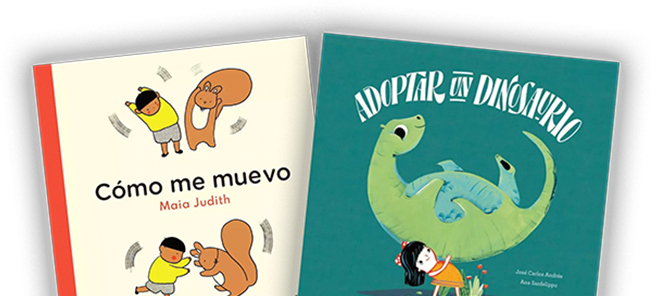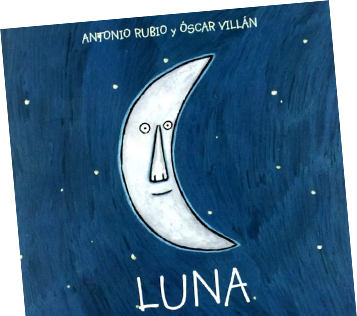
Reading out loud helps babies and early readers connect with text, and become a skilled bilingual listener. Spanish board books are a great way to make your read-aloud more educational and engaging. The exciting sounds of a new language can captivate small children, especially if you use these reading tips!
How to Read to a Baby
Reading to your baby is a great way to bond, and it also provides a learning opportunity. When you read aloud, you’re exposing your child to new words and expanding their vocabulary.
Babies are never too young to enjoy the sound of reading. Babies who are read to as newborns develop greater vocabularies throughout childhood, and research shows infants shown picture books daily are exposed to 78,000 words every year.
The best way to foster a love of learning and books early is to use books that are bright, colorful, and easy to understand. Early readers may not be able to comprehend a story, but they can fall in love with bright and beautiful illustrations, and pick up new words as you point them out on the pages.
It's important to make books a favorite activity for little ones. They'll get attached and develop interests quickly. You'll likely find that the more your baby grows, the more they show a preference for certain books over others.
Don't worry about repeat readings stunting their development.
Children learn something new every time they hear a story (even the same one); and for little ones just picking up words, Spanish board books in particular help them master new vocabulary through repetition.
Use Clear Pronunciation
You can use silly voices, speak LOUDLY, or whisper at certain parts -- but make sure that your pronunciation is clear. Children benefit greatly from nuanced expressions, but they will imitate what they hear. If there are any mispronunciations, they could adopt them, too.
If you are unfamiliar with Spanish, there are plenty of resources to help you learn. You can find them online or in bookstores; many offer basic instruction as well as practice materials and quizzes. Even just learning the Spanish alphabet can help you improve your pronunciation during a read-aloud.
Choose Similar Books in Both of Their Languages
The best way to encourage children to learn a second language is to expose them to books in both languages. Reading aloud every day can help children build vocabulary and develop literacy skills.
You want them to improve their language listening and vocabulary at the same time in both languages. So, you should only introduce more complex stories in English when you're ready to do the same en español.
Spanish board books are great for children 0 to 5 years old. So, you can benefit from these books for years if you start reading to your little one when they're still in diapers. And even before they've spoken their first words in either language!
Bring Stories Alive With Your Emotions
Your voice, tone, and expressions will all make the world of reading vibrant and enjoyable for your baby. You may not realize it, but your voice is an incredibly powerful tool. Think about how you can use it to paint a picture of what's happening in the story and bring it alive for your child. You could try acting out different characters or using different voices to create a fun, memorable experience.
If you're reading a story with multiple animals, for example, you might use your voice to convey their personalities. A big, bad wolf could have a deep, slow voice. But a cute mouse will talk in a high-pitched, quick voice.
Animal noises are also delightful to children in both languages. You'll likely have fun too as you learn how they differ between English and Spanish!
Make Eye Contact and Smile as You Read
A read-along is a special time to spend with your baby, and infants are highly perceptive of facial expressions. Researchers at Stanford University have found that infants respond to expressions almost exactly as adults do.
When you make eye contact and smile, you're showing your child how much fun reading is, and how much you love sharing stories with them.
Creating these emotional connections during a read-aloud helps your baby form a deeper bond to the text.
Remember to Read Slowly and Articulate
You may be used to reading quickly and fluidly, but when you're reading aloud for a baby, slow down. As you read, pause at punctuation marks or whenever your child looks away from the page. This will help them understand what they're hearing.
If your baby gets distracted during a read-along, slow down, regain their attention gently, and carry on where you left of. You can also start to engage them once they're a bit older by asking them to find things on the page. This helps rein in their attention.
Even though you might read more methodically with small children, try to keep your story under 10 minutes. They have short attention spans, and anything longer will feel like a chore if they aren't willingly participating.
Make Connections Beyond the Text
Your child may have read a book in Spanish that took place in the kitchen. After reading, you could say, "¡Vamos a la cocina!", and start to name objects you saw in the book.
From there, you can build onto your baby's budding vocabulary by adding colors. Point and name an object, then add it into a sentence. The same works in English. For example:
- Point and show them a bowl. Say "bowl" and encourage them to repeat.
- Then you can say, "This is a bowl. The bowl is blue."
- Summarize by combining your sentences: "This is a blue bowl."
Connections become even more powerful when you choose books that focus on things your child already loves. Whether it's animals, trucks, or dinosaurs, try to use books that touch upon things your little one already shows interest in.
Get Spanish Board Books Every Month
Subscribe to Sol Book Box to get hand-selected board books in Spanish delivered right to your door. We have a vast library of excepcional Spanish books for babies that are perfect for early learners and read-alouds. ¡Feliz lectura!




